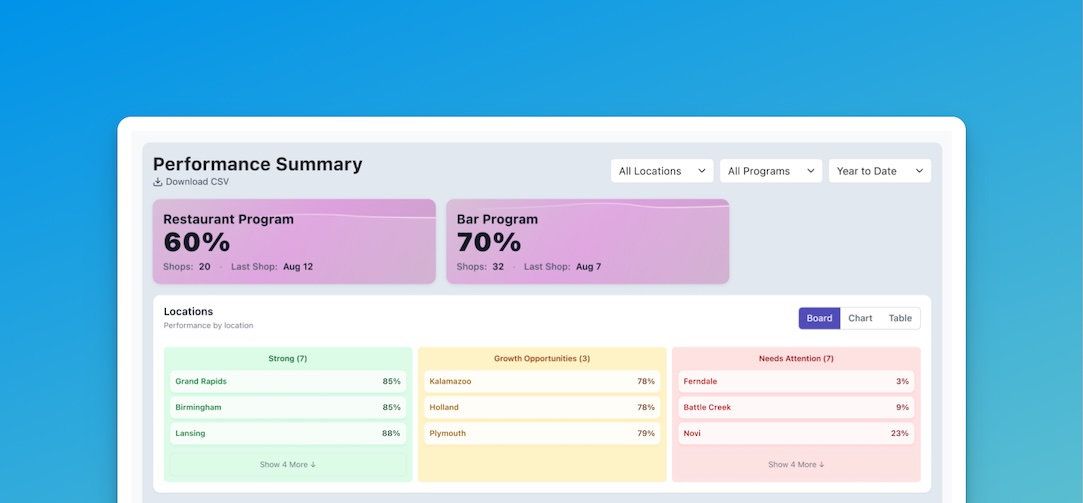
For your small business to thrive you don’t just need good communication—you need better customer communication. That’s because communication is fundamental to everything we do especially in commerce. It’s required for all aspects of business from marketing and education to transactions and support.
But how do you make that happen successfully for your business? How can you tell if your communication strategy is working—or causing problems? And what can you do to keep improving? After all you’ve got to talk the talk before you walk the walk for your customers.
In this article we’ll take a close look at the importance of communication. We’ll also cover the three C’s of communication that are especially important for small businesses. Then we’ll get right down to it with five best practices that are proven to help people like you get better customer communication for their businesses.
So let’s talk!
Communication Is the Foundation for Better Customer Relationships
Ultimately business is all about starting building and maintaining relationships with potential and current customers. And relationships are all about communication—so the two go hand in hand.
In practice communication covers just about every customer-facing aspect of your small business. For marketing and advertising you’re focused on attracting and enticing people from your target audience who could become paying customers. Once they commit to a purchase communication is required for making that transaction occur—and explaining what they need to know. Then to keep those customers coming back for more you’ll want to maintain and build on that relationship through open lines of communication proactive service and more.
With this in mind it’s critically important for your company to have the best—or at least better—customer communication practices in place. So if you’re a small business owner looking to make improvements to your daily operations you’re already heading in the right direction.
The 3 C’s of Customer Communication
Let’s start with the fundamentals. While all communication has the same goal—accurately transferring an idea from one brain to another—better customer communication has a little more nuance. Not only should you and your team be able to tell prospects and customers about your offerings you should also do so in a way that streamlines and optimizes the exchange. That way people will be more likely to shop at your business.
There are three core aspects of customer communication that every business should consider. (And conveniently they all begin with C!)
Consistency
No matter what you have to communicate—or how you do it—the best thing you can do is be consistent with messaging to your prospects and customers. Even if they genuinely want to buy whatever you’re selling they won’t (and can’t) do that if the information they receive is incorrect or confusing. Stay on brand keep your information accurate at every touchpoint and prioritize clarity.
Convenience
In today’s marketplace it’s ridiculously easy for people to find another place to shop. So it’s essential that you make every communication channel as convenient and accessible as possible. Whether it’s in person over the phone by email or via chatbot a customer should always be able to reach someone. Do your best to minimize friction and delay between them and what they want.
Customization
Last but not least communications should be customizable—that is to say each interaction should reflect the uniqueness of the individual. For example you can add personalized recommendations to your email marketing. Or provide self-service and employee-assisted options for in-store purchases. It could even be as simple as using the customer’s name during the call. Every little bit adds up and creates a special customer experience.
By integrating these fundamentals into your business you’ll be well on your way to better customer communication.
Core Customer Communication Channels
Next let’s take a look at the common mediums for customer communication. Here are the typical channels through which you’ll talk with your prospects and patrons:
- In Person & Face to Face: In-store interactions with sales representatives and other employees
- Phone & Video Calls: Customer support virtual meetings and voice-only conversations
- Live Chat & Messaging: Web-based chat features bots and other text communications
- Email: Either direct text-only contact or sales newsletters and marketing
- Website & Social Media: All other digital marketing mediums both on your own site and others
Remember even though prospects and customers will contact you through any and all of these channels the same basic principles apply for each: your communication should be cohesive clear consistent and on brand at every turn—whether in person over the phone or via written text.
This applies not only to the information you present but also the way in which you present it. Prospects and customers should be able to spot your company’s signature style in every medium. If your company is fun colorful and lighthearted that element should be present in every conversation. On the other hand if it’s professional educational and direct this must be applied to communications across the board—otherwise you’ll undermine your entire organization and risk confusing your customers.
We’ll dig into this concept more later but basically customer communication is your brand personality in practice. So it’s always a good idea to be intentional about it—no matter how the communication happens.
Our 5 Best Practices for Customer Communication
Now that we’ve covered the fundamentals and different modes of communication it’s time to get down to business. Here are our top five best practices for better customer communication that work for any organization or industry:
1 - Listen First
Like with relationships communication is a two-way street. As the business representative it’s important that you take at least some time to listen first. That way you can meet the prospect or customer where they are and lead them from there.
Active listening is proven to lead to better customer communication. This practice means paying close attention to the speaker purposefully demonstrating that you are fully engaged in the conversation and then providing feedback to ensure the message is being received as intended.
For example when a cranky customer complains that they can’t find what they’re looking for on your website you can respond with “It sounds to me like you’re looking to purchase this item. Is that correct?” By actively listening and then clarifying the request right away the entire interaction will be smooth fast and more satisfactory for everyone involved.
2 - Have Patience & Demonstrate Empathy
A lot of customer communication happens in support calls—and people who call in for assistance typically aren’t in the best mood. Sometimes it helps to pretend that everyone is having a bad day and you have only a few moments to turn that mood around.
Make sure you and your staff are trained and prepared to have patience and empathy for every prospect and customer. Being genuinely human to each other is a great way to demonstrate your brand’s values as well as foster strong relationships built on trust. It’s an essential part of better customer communication.
3- Be Solution-Oriented
Whether you’re dealing with potential customers or long-time supporters it’s always a good idea to be solution-oriented during conversations. While some casual chatting can be helpful for building rapport focusing on outcomes will streamline the conversation as well as save time and resources.
This doesn’t just apply to customer support either. When pitching your product or services to potential new clients connecting their pain points to your problem-solving solutions is a great way to close a deal.
4 - Communicate Clearly & Concisely
We’ve touched on this several times but it bears repeating: better customer communication prioritizes clarity and conciseness. By demonstrating that you value your customers’ time you can build trust and protect relationships. Get to the point make it effective and keep it direct.
This practice also saves your business’s own resources. With targeted communication you won’t be chasing down cold leads that will never pan out—or spinning through all possible marketing angles when they’ve already decided to make a purchase. Just remember to stay balanced and share what makes your business unique.
5 - Stay Authentically on Brand
With all else said our final piece of advice for better customer communication is simple: stay on brand and be authentic. Make sure no one loses their cool when an elderly caller can’t find their password for the fifth time or an angry teen leaves a nasty comment on your company’s social media page. Keep things positive and well enough on brand that you could say the same thing in a marketing campaign and have the same results.
Furthermore remain sincere and humble in all interactions. If (or rather when) your business messes up it’s far more effective to own up to mistakes and focus on making things right. Avoid becoming a spin doctor for your own company. People understand that things happen and they often happen outside of your control. By staying humble you’ll not only demonstrate your humanity but you’ll also build a more genuine relationship with your customers. This can lead to better public perception of your company—and even increase sales in the future.
How to Tell if Your Team Is Communicating Effectively
You’ve done the work to train your team for better customer communication… but how do you know if you’re actually communicating as effectively as you could?
Besides the basics—like comparing sales and conversion numbers and asking your customer-facing employees—there are three key strategies that can help:
- Customer Surveys. Directly ask your customers if you’re communicating effectively. This is a great way to get started and gather data directly from the source.
- Mystery Shopping. For more precise information hire a skilled customer experience evaluator to take a targeted look at your communication channels.
- Online Reputation Management. There are plenty of metrics that can help you gauge the effectiveness of your digital communication channels like your average review ratings on popular platforms.
You can find helpful tools for all of these methods at CustomerOptix. We designed our CX solutions with small businesses in mind—so they’re easy to start implement and scale. Plus they’re affordable and flexible meaning you can make changes based on your business’s evolving goals and resources. Learn more and get started today!
Better Customer Communication for Better Business
Although communication is an essential part of life better customer communication doesn’t happen by chance. It’s the result of thoughtful strategies consistent effort and a genuine desire to connect with your audience. When you listen closely converse clearly and treat every interaction as an opportunity to build trust your business becomes more than a service or product—it becomes a brand people want to support.
By following these five best practices—and tracking your progress with the right tools—you’re setting your business up for stronger relationships more loyal customers and long-term success. And if you’re ready to take your customer communication from good to great CustomerOptix can help you make that happen.
Your future customers are already listening. Make sure they hear the best of you at every touchpoint.
Subscribe to the Buzz
Receive exclusive insights, tips, and customer experience strategies straight to your inbox.







